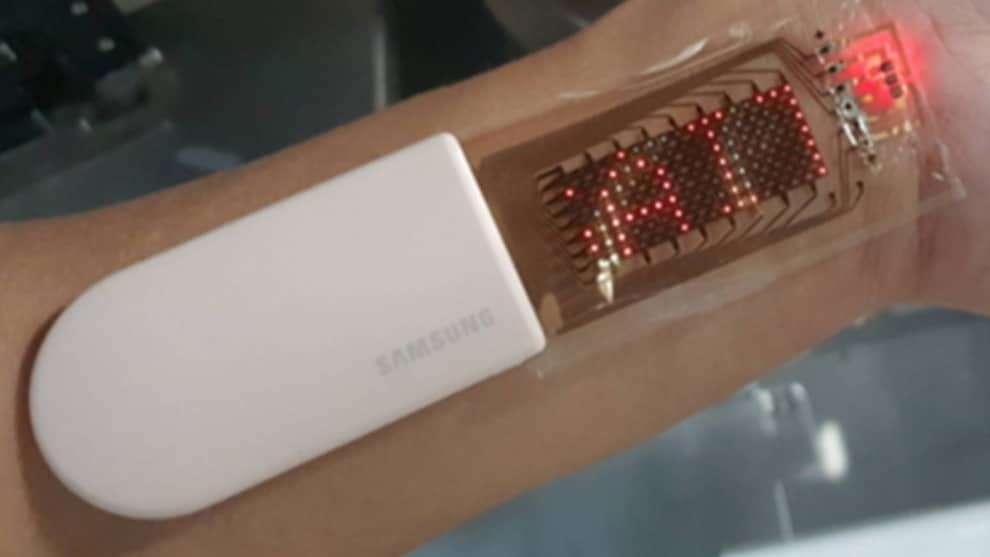Samsung is playing Cyberpunk with a heart tracker stuck to its skin
For many years now, smartphone manufacturers have mostly been offering connected watches and bracelets, which are particularly useful for monitoring sports activities or certain medical data such as the level of oxygen in the blood (Sp02). Of course, the closer the sensor is to the skin, the more precise and reliable the measurements.
Samsung has decided to apply this logic to its climax, developing a heart tracker grafted directly to the skin of your wrist. Just to make it too Cyberpunk for our tastes, the heart sensor comes with a OLED screen made of stretchable materials, used to display your heart rate in particular.
An expandable OLED screen capable of withstanding skin movements
Thanks to this technology, the OLED screen glued to your wrist is able to stretch and adapt to the movements of your skin, and continue to function in perfect conditions. ” The strength of this technology is that it allows you to measure your biometric data for a longer period of time without having to remove the device when you sleep or exercise, since the patch is an integral part of your skin ”, explains Youngjun Yun, co-creator of the device.
” You can also verify your biometric data immediately on the screen without having to transfer it to an external device. The technology can also be extended for use in wearable health products for adults, children and infants, as well as patients with certain diseases ”, continues the scientist.
Samsung has developed an OLED skin patch that work as a fitness tracker https://t.co/DYwZuOHgGX
– Android Authority (@AndroidAuth) June 7, 2021
According to the researchers, this OLED screen can support up to 30% skin elongation. In addition, the heart sensor and expandable OLED display have been proven to continue to perform flawlessly after being stretched over 1000 times. Finally, when measuring signals from a moving wrist, the sensor recorded heart signals 2.4 times stronger than those recorded by a traditional silicon sensor.
Read also: Top 5 apps for exercising and staying in shape
Next goal: mass production
As the researchers detail, making this OLED display flexible was the most complicated step, in the sense that a slab always ends up breaking or deteriorating if its shape is manipulated excessively. To overcome this problem, all materials and elements, including the substrate, electrode, thin film transistor, emission material layer, and sensor, must be physically stretchable and maintain their electrical properties.
The researchers therefore replaced the plastic material used in existing stretch screens with an elastomer. It is an advanced material with high elasticity and resilience. The only problem is that it is vulnerable to heat. In fact, to reinforce thermal resistance, the researchers changed the molecular composition of the elastomer.
” Our research is still in its early stages, but our goal is to realize and commercialize expandable devices by increasing system resolution, scalability and measurement accuracy to the level that makes mass production possible ”, assures Jong Won Chung, one of the co-creators of this device.
Source: Samsung



